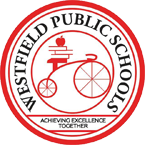 WESTFIELD – Before taking the vote on which redistricting option to choose for the 2018-2019 school year, Westfield Public Schools superintendent Stefan Czaporowski shared the results of the recent survey with the School Committee on Monday. The survey was sent to all stakeholders, including families with school-aged children and community members.
WESTFIELD – Before taking the vote on which redistricting option to choose for the 2018-2019 school year, Westfield Public Schools superintendent Stefan Czaporowski shared the results of the recent survey with the School Committee on Monday. The survey was sent to all stakeholders, including families with school-aged children and community members.
The survey asked for a vote and comments on the two remaining options for redistricting; to create a 5-6 intermediate school and 7-8 middle school, or to create two 5-8 middle schools.
There were 1,746 responses to the survey, with over 600 submitting comments. Two thirds of the respondents were parents.
Overwhelmingly, at a ratio of 69% to 30%, respondents supported the option of a 5-6 intermediate school and 7-8 middle school. Another significant group, 75% cared about equity between the two middle schools.
Czaporowski said the potential savings from closing the Russell Elementary School will be $528,675. Of the two options, the 5-6 and 7-8 schools would be more costly due to the need for city-wide busing for students, potentially increasing busing costs from $603,000 to $773,000. The option of two 5-8 middle schools would not require additional costs in busing, and would potentially save the district some money.
In discussing the two options, School Committee member Ramon Diaz, Jr. said he was concerned about what happens to class sizes in the rest of the district. He also said that in the studies he’s looked at, the number of transitions that students make does affect student achievement, which drops off after each transition, especially in math and English.
Diaz said although the community is more comfortable with the 5-6, 7-8 model, he hasn’t found the data to support its advantages. “It can work both ways,” he said.
Equity between the two middle schools was one reason for School Committee member Cynthia Sullivan’s support of the intermediate and middle school option.
Sullivan said she’s lived on the south side of Westfield for 20 years, and said there are disparities in the two middle schools, causing a North-South division which her children were aware of when they went through middle school. She said 75% of the community expressed the wish to make the learning experience at the two schools equal.
Sullivan said she was concerned about the potential of increased costs. “I feel like you have to spend money to do the right thing,” Sullivan said.
William Duval also said he was concerned about increased transitions for students. “Change equals stress,” Duval said, adding that he worked in a school where similar changes took place, and the school had to add a transition program for the students. “We need more information,” Duval said.
Diaz also said that the survey failed to ask people if the new configuration created bigger class sizes in the future would they still support it. “Are we fixing one problem and causing a bunch more,” he said.
Kevin Sullivan said a few months ago this would have been an easy vote for him. “It’s no longer in my mind a financial question. We’re not going to save money,” he said. Sullivan said he is concerned about longer busing times for students, and said coordinating the schedules so elementary students are not sitting on a bus for longer periods “is big.” Sullivan said in good faith he could not vote for two 5-8 middle schools.
Mayor Brian P. Sullivan said unfortunately, the district has to consider the money. “Not only do we need a new elementary school, but we have two that should be offline right now.” However, he said he thinks with the new configuration, the city will get through the next five years.
Kevin Sullivan then made a motion to recommend Option A, one 5-6 intermediate school and one 7-8 middle school, or Option B, two 5-8 middle schools for the FY19 academic year. School Committee members voted 6-1 for Option A, with Diaz dissenting.

